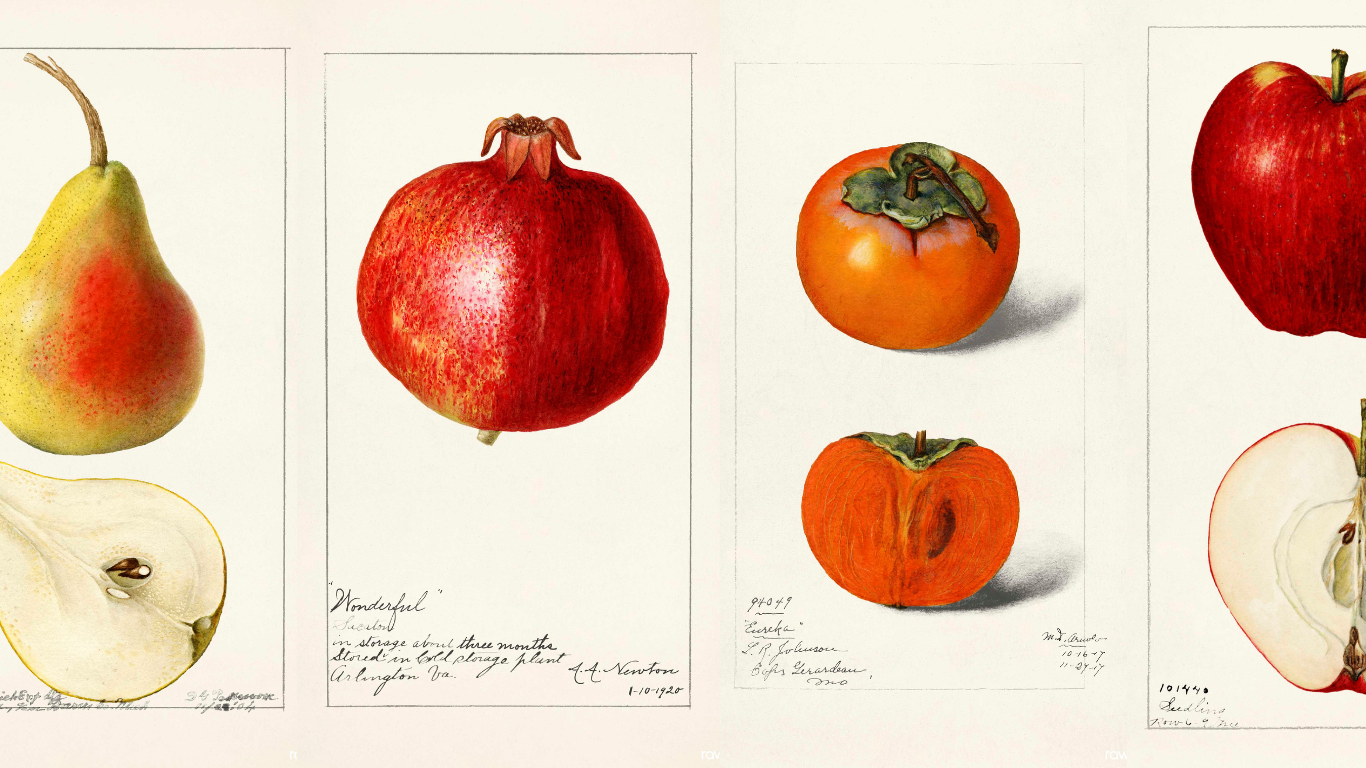
FRUITFUL ART
In 1887, the U.S. Department of Agriculture's Division of Pomology began commissioning artists to create detailed illustrations of fruit varieties for lithographic reproduction in USDA reports, articles, and bulletins.
The use of color lithography was essential to help farmers better visualize and understand the content of these publications. This collection, now a historic botanical resource, documents new fruit and nut varieties, as well as specimens brought back by USDA plant explorers in the late 19th and early 20th centuries. The USDA's leading artists—Deborah Griscom Passmore, Amanda Almira Newton, and Mary Daisy Arnold—each painted over 1,000 watercolors, together accounting for more than half of the collection.
Deborah Griscom Passmore:
After years of working to establish herself as an independent botanical artist, Deborah Griscom Passmore joined the U.S. Department of Agriculture (USDA) in 1892. During this time, the USDA employed numerous artists—primarily women—tasked with creating detailed visual records of the many fruit (and likely vegetable) varieties that could thrive in American soil. While photography had become available as a tool for documentation, it was unable to capture true colors, and it was believed that human skill could offer a more accurate representation. Passmore quickly became the head artist in the USDA's Pomology Division, where she spent 19 years painting over 1,500 watercolors of fruits, nearly all of which are preserved in the National Agricultural Library and accessible online.
Amanda Almira Newton
Newton is the second-most prolific artist in the archive, contributing about one-sixth of the total collection. Born around 1860, she was the granddaughter of Isaac Newton, the first commissioner of the USDA.
Her work for the USDA spanned a diverse array of fruits and nuts, with a particular focus on apples. Her portfolio also includes paintings of strawberries, plums, citrus, persimmons, avocados, cherries, and even fruits rarely grown in the U.S. like loquat and baobab. Newton’s style is known for its precision, blending bold lines with subtle color variations. Starting in 1896, she also created over 300 wax models of fruit specimens being cultivated or tested across the country. For various expositions, she crafted models illustrating how factors such as environmental conditions, cultivation methods, and storage practices impact the quality and longevity of fruit.
Mary Daisy Arnold
There is not a lot known about Arnold, except that she studied art in New York and began her long career with USDA (35 years) in 1904, becoming part of a select cadre of illustrators. Arnold painted 1060 watercolors for the USDA, including many varieties of apples, strawberries, stone fruit, citrus, figs, papayas, and persimmons. Arnold lived in the Washington, D.C., area, and painted landscapes in oil outside of her USDA job.









